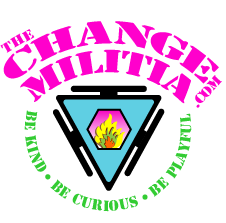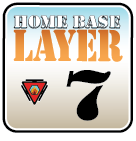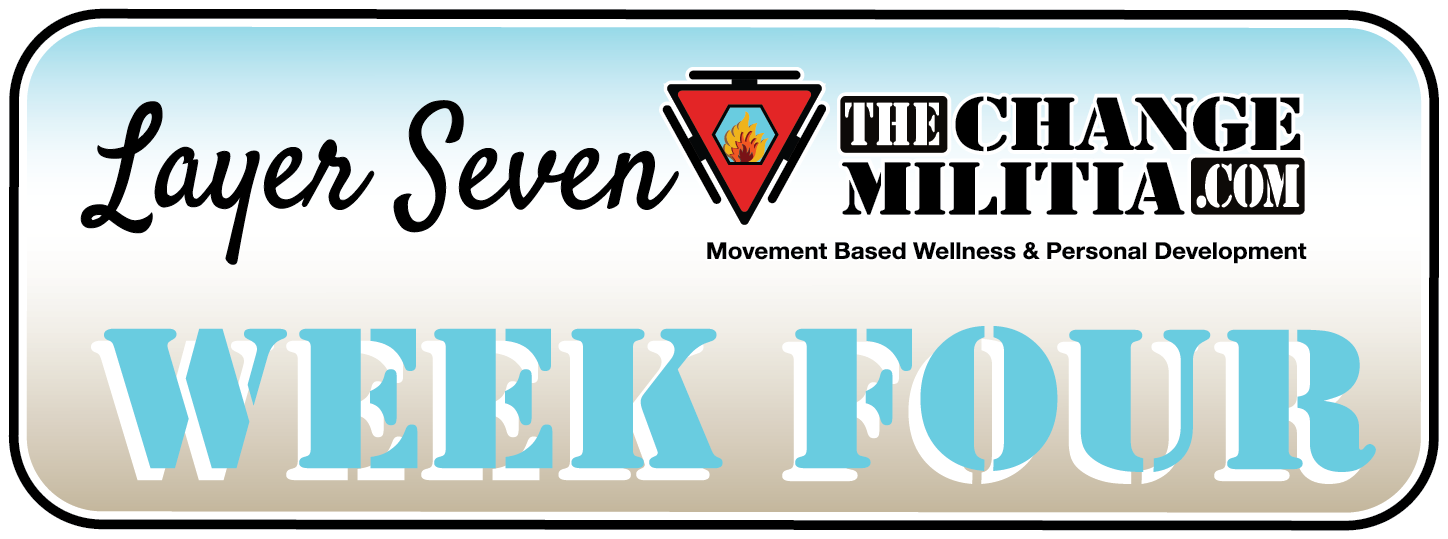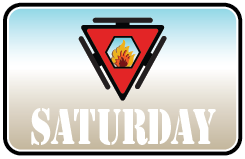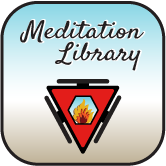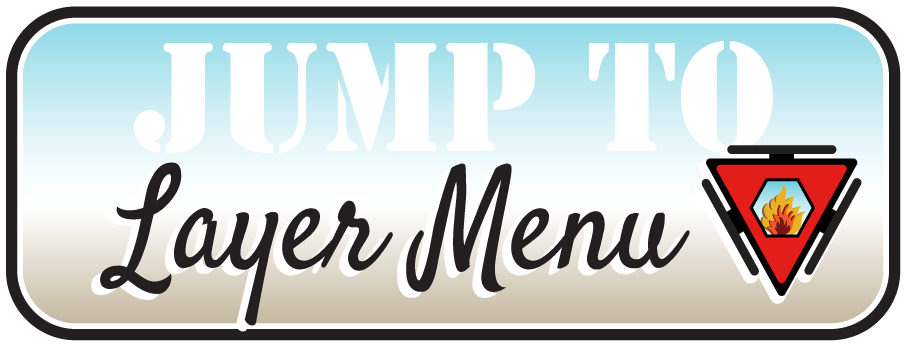Layer Seven, Week Four – Sunday
- Read Week Four Concepts
- Watch video and read description for Energy Configurations – Stagnant
- Do Meditation – Energy Configuration – Stagnant and Current150
Sunday’s Focus:
Track your energy and find things in situations, relationships, or patterns that feel stagnant. What feels sluggish, heavy, spent, or weak? What do you own that you don’t use? What is part of your life that doesn’t help create momentum? Read video description for more.
Sunday’s Concepts
In every moment, every aspect of your body is in a state of transition. Every component that keeps you centered and balanced is influenced by internal and external forces. Change happens … constantly and endlessly. As a reminder, the seven components are focus, strength, stability, flexibility, endurance, speed, and rejuvenation.
You can explore the consequences of change by classifying existing conditions, the transitions possible, and the momentum present. Where are you and how much energy are you putting toward where might you go next?
Layer Two, Week Two – Concepts has a list of energy configurations as the gross indicators of your degree of receptivity, opposition, and resistance.
Opposition and resistance will accelerate imbalance while receptivity will encourage balance. Let’s divide the list.
Centering, balancing, improving, collaborative, and intimate configurations:
- Expansive
- Accumulating
- Percolating
- Fluid
Unbalancing, distracting, inefficient, and distance-creating configurations:
- Stagnant
- Compressive
- Isometric
- Fluctuating
- Explosive
- Scattered
- Bleeding
A bit of both:
- Transitive
- Isotonic
What you will be assessing when you assess your overall balance is the energy configurations in all seven components in each of your bodies.
Layer Seven, Week Four – Monday
- Read Monday Concepts
- Watch video and read description for Energy Configuration – Fluctuating
- Do Meditation – Energy Configuration – Fluctuating and Current150
Monday’s Focus
Today, look for energy that feels unresolved, erratic, scattered. Where does it feel you are going in multiple directions at once? Where are you undecided? Where do you feel like things ebb and flow without cause? Read more about this in the video description
Monday’s Concepts
Distracted is an unbalanced state. Let’s take an example: At 10:00 a.m., you are distracted by what to have for lunch that will be fulfilling and still allow you to go for a run in the afternoon without feeling like you have a brick in your belly. (I’m familiar with this one!) The distraction reduces your ability to stay centered on your intentions.
A solution to help you refocus and get back on track is to explore each of your bodies and see where the primary imbalance exists. The imbalance will exist when your bodies are not equally energized, your components are unequal, and/or your energy configurations in any of the bodies or components are not optimal.
For this example, it might be your emotional body. You are worried about something in the near future (lunch). Worry is a state of emotional imbalance.
After you identify which body is the culprit, you can check the balance in each of the components of that body. In the lunch example, you might be excessively focused on the emotional attachment to food (the fear of starving or not having/being enough). You might be placing too much energy on rejuvenation (the fear of weakness or death). You will probably lack emotional stability, flexibility, strength, and endurance in that moment.
Focus and Rejuvenation are overvalued and over-energized by your emotional body (and subconscious mind) and the other components are undervalued and weak.
In the worried about lunch scenario, the components of your emotional body that are most imbalanced are focus and rejuvenation. The energy configuration (of your emotional focus) is scattered. The configuration of your emotional rejuvenation is compressive.
Scattered and compressive pull energy away from your intention and create distraction. Your emotional focus scatters because your focus is in a frenzy and drawn in multiple directions (mental stories, food choices, starving). Your emotional rejuvenation is compressive because it is only acknowledging one possibility, lunch, and trying to constrict and condense all your energy into only that.
Layer Seven, Week Four – Tuesday
- Read Tuesday Concepts
- Watch video and read description for Energy Configuration – Isometric
- Do Meditation – Energy Configuration – Isometric and Current150
Tuesday’s Focus
Find things in your life today that feel like they are congealing, tense, building without moving. Where is the pressure building? Where is the tension unmoving? Where do the energies of your life conflict without resolution? Other examples in the video description
Tuesday’s Concepts
The solution to your lunch distraction is to address the core issue, emotional imbalance. There are a ton of different ways to do that and we will explore a bunch of them in the weeks to come.
Here is one: The goal will be to shift the imbalance by energizing another body and other components that will redirect and reset where your subconscious mind is putting its attention. It will involve shifting your energy configurations from inefficient to expansive and fluid.
You’ll begin by being those things in your physical body. You will do something like squats or push-ups until your physical body, components, and configurations generate more energy than your emotional imbalance.
Let me repeat that, you will regain balance by generating energy that contrasts or overrides your imbalance.
You will, in essence, be distracting yourself from your distraction.
A big physical effort like squats is usually enough. If it isn’t, then you might do something to generate movement in your energy body like Panting Horse Breath from Layer Five.
Mentally, you could do multiplication tables or complex visualizations. You could recreate an emotional scenario where you were stable, flexible, strong, and tolerant. (like teaching your kids to drive).
The goal is to shift your subconscious mind’s priority from your emotional imbalance to something else that creates vitality and beneficial momentum. It doesn’t really matter what else as long as it generates more energy than your distraction in the direction you want to go.
This isn’t a permanent solution but it is a start. I realize it is complex and might take more time and effort than just allowing yourself to wallow in distraction for a bit. But, it will work, you will be more balanced, more energized, and distraction won’t be as likely.
Layer Seven, Week Four – Wednesday
- Read Wednesday Concepts
- Watch video and read description for Energy Configuration – Expansive
- Do Meditation – Energy Configuration – Expansive and Current150
Wednesday’s Focus
Identify situations today when you feel your energy configuration to be expansive. Feel for where you glow, are generous, fulfilled, or happy. Where, when, and how do you get bigger? Can you identify feelings upwelling and energy multiplying? What does idea creation or creativity feel like? Read the video description for more.
Wednesday’s Concepts
The path to distraction: In the worried about lunch example, you focused happily on your to-do list, plugging away like a lawn aerator. And then you began to worry about lunch. Your worry generated emotional momentum and started pulling at your other bodies. Distraction happened.
Let’s explore why you began to worry about lunch. Worry happens because your subconscious mind doesn’t have anything to do. If you are comfortable and safe, your subconscious mind doesn’t have any threats to assess … so it starts looking for a grain of sand to make into an oyster … and that is where momentum and habit come into play.
Your subconscious mind wants to worry. It wants to monitor the momentary possibility that something it fears is going to happen and bring about pain, suffering, or death. It wants to be intolerant, judgmental, and reactive. When there are no fears present, it starts looking elsewhere.
The primary place it looks is your list of habits. Your subconscious mind classifies your fears by how reactive your system is to them not necessarily how dangerous they are. Think about when your parents, partner, or child want to trigger you. What do they do? They do what has worked before and what works the quickest.
If your subconscious mind knows that you habitually suffer from FOML (fear of missing lunch), it will plant a seed that you should check Yelp, Instagram, and Pinterest for lunch ideas. Your conscious mind may initially ignore that seed… so your subconscious mind starts adding energy to the fear. The added energy creates a sense of urgency (momentum) until you either, get distracted, or refocus your determination (re-center and rebalance). Refocusing your determination is the conscious choice to change your energy configuration(s).
Your subconscious mind uses your habitual energy configurations against your long-term interests to satisfy its limited view of the world and the opportunities present.
Your subconscious fears will always initiate your distractions. Always.
Layer Seven, Week Three – Thursday
- Read Thursday Concepts
- Watch video and read description for Energy Configuration – Bleeding
- Do Meditation – Energy Configuration – Bleeding and Current150
Thursday’s Focus
What are the constant or habitual drains on your system? Where, when, why, and how do you bleed energy? Identify the circumstances that feel like your life is leaking or being sucked out of you? What distractions occur regularly? Read more in the video description
Thursday’s Concepts
So, what triggers your subconscious mind to begin looking for things to worry about? The answer, as you might (should?) have expected is excess energy.
When you are in balance, you are efficient, you bring in more energy than you exert, and you expand. That expansion swells the energy in one or more of your components in one or more of your bodies.
Your subconscious mind feels that more than the typical amount of energy and uses it as an excuse to look for something to worry about. It worries that you are getting too big. It worries that your expansion (healthy balance) will lead to an unhealthy imbalance. And it might be right.
Eating fresh blueberries right off the bush is super healthy. You will get healthier if you make a habit of eating fresh fruit. Fresh fruit will bring in much more energy to your system than it takes to digest … unless you eat too much too quickly.
If you do anything healthy faster than your body can metabolize, it becomes unhealthy or injured.
Have you ever eaten so much watermelon that you felt sick? Ever exercised so effectively that you feel light headed? Ever had so much emotion that you felt out of control? Your subconscious mind uses your history to justify its current desire to worry.
Your subconscious mind chooses to view healthy discomfort as a potentially unhealthy imbalance as justification for distraction. It wants to distract you so that you don’t expand past the place where it feels comfortable, familiar, and safe.
It creates a small imbalance to try to keep you from a bigger imbalance. You can very correctly think of your subconscious mind as your small mind.
Layer Seven, Week Three – Friday
- Read Friday Concepts
- Watch video and read description for Energy Configuration – Explosive
- Do Meditation – Energy Configuration – Explosive and Current150
Friday’s Focus
Reflect on times, situations, instances where you have lost it. When have you allowed yourself to be triggered and then exploded? Do you typically explode with anger, grief, or incredulity? Do you attack or defend? Does your explosiveness create distance by repelling or retreating? Further examples here.
Friday’s Concepts
Here is an example using the lunch scenario. Your emotions of worry (about an unfulfilling lunch) enlist your mental body into thinking about menus, running, schedules, etc. Your mind will create a bunch of stories (mostly based on fears) that generate a headful of deflecting energy (in opposition to your to-do list).
You start to stress out (physically and energetically distracted) when your emotions bring about fearful thoughts. The momentum generated by your emotional imbalance pulls your other bodies out of balance. The worry and story creation (mental and emotional imbalance) bring about fear responses (distractions) in your physical and energetic bodies, leading to physical tension, energetic diffusion, and defensive hypersensitivity.
When you redirect your physical body, energy body, and your subconscious mind (by doing squats), you are devaluing your mental and emotional fears about lunch by placing significantly more in the moment value (energy) on physical movement (squats).
The subconscious mind is primarily concerned with what is directly in front of it. It is easily distracted and you can change its focus by distracting it with something else (like squats). The energy that you generate doing squats changes your overall balance. Massive movements of physical energy change the balance of power between your bodies.
Here is where the problem comes in. When your small mind creates a distraction (imbalance), that imbalance begins to gain momentum. Your subconscious mind controls your resistance. It has no resistance to something it is generating. So, the distraction, with very little energy input, gains mass and velocity. It is a wagon pulled by your subconscious mind that turns into a locomotive, steaming down the tracks toward distraction, inefficiency, and mediocrity.
As it steams down the track, it starts to collect rail cars. If your small mind starts pulling a caboose filled with the fear of spiders, that fear will collect other fears. Every fear has a primary body and component that it is coupled to (to keep with the train analogy). Once one fear starts moving without the applying the brakes, it unleashes and entrains (pun intended) your other fears. Pretty soon, you are a train wreck (yep).
Layer Seven, Week Three – Saturday
- Read Saturday Concepts
- Watch video and read description for Energy Configuration – Isotonic
- Do Meditation – Energy Configuration – Isotonic and Current150
Saturday’s Focus
Bring awareness to the places in your body, mind, emotions, relationships, and environment where you encounter resistance. You are looking to identify everything, in and about you, that feels hard. Read the description that accompanies the video for more.
Saturday’s Concepts
If you’ve ever tried to end an addiction or change an entrenched habit, you should be able to relate to the idea of momentum. Not eating processed sugar isn’t hard for the first minute, but it gets progressively harder as the momentum of the addiction builds.
Every imbalance is the consequence of some habit and/or the momentum generated by some subconscious fear, image, or belief. If you create a mid-morning pattern of worrying about lunch, that imbalance will build to a crescendo every day before noon. The habit creates momentum. It will dog you, Pavlov.
Addictions are the habitual generation of momentum toward some specific imbalance. Habits are addictions with a lower value or consequence.
Momentum is an energy configuration changing at a constant or increasing rate. Momentum is Change changing.
An imbalance in any body will cause imbalances in all your other bodies. An imbalance in one component will lead to an imbalance(s) in other components because the non-beneficial energy configurations gain momentum.
Your awareness of the energy configurations in each of your bodies and each of the components will help you identify your imbalances, your balanced points, and most importantly, the transitions between the two. In this layer and following layer’s movements, feel the energy configurations and how, when, why, and where they transition. You will start learning to feel your energy moving, why it is moving, and where it is going.
This is empathy and before you can feel what others are feeling; you need to figure out what you are feeling. Empathy is the ability to feel energy moving. When you know how much of that energy is yours, what it is doing, and where it is going, it is much easier to figure out what is happening with everything and everybody else.
Energy Configurations – Stagnant
Step 1 – Find a comfortable seat, take a few deep breaths, and allow yourself to settle and relax.
Step 2 – As you breathe normally, begin to explore what areas of your life and bodies feel stagnant.
Step 3 – You are looking for energy that feels stagnant. What do you not want to think or emote about? What areas of your life don’t feel like they are going anywhere? What feels like it doesn’t have the potential or opportunity for change.
Step 4 – What do you have that you don’t use?
Step 5 – Starting with your physical body, which body part feels like it is dull, unmoving, or unresponsive.
Step 6 – Explore your mental body. Search for images, beliefs, thoughts, and patterns that feel stuck. What do you mentally hold on to that feels unresolved?
Step 7 – Do this with your emotional, energetic, and relationship bodies. What relationships aren’t going anywhere? What good friends haven’t you been in touch with?
Step 8 – You are not looking to psychoanalyze your life, you are looking to increase your awareness of where these energy configurations may exist.
Why it Matters – Being able to discern your energy configurations will allow you to increase the awareness of the things that influence your actions and reactions. It will give you the ability to identify more opportunities more quickly.
Everyday Usability – If you can identify stagnant energies, you can make choices to change the configuration by inducing movement in some direction. It might be adding energy, altering trajectories, or disposing of whatever is stagnant.
Progression – As you get familiar with what stagnant energy feels like, you can identify it quicker and alter something. The next step would be to feel energy getting stagnant and alter your configurations before they devolve into stagnation.
Energy Configurations – Fluctuating
Step 1 – Find a comfortable seat, take a few deep breaths, and allow yourself to settle and relax.
Step 2 – As you breathe normally, begin to explore what areas of your life and bodies feel like they are unstable, shifting, undulating, fluttering, or frenetic.
Step 3 – You are looking for energy that feels changeable or elastic.
Step 4 – Starting with your physical body, which body part feels like it is energized and sometimes not? What feels alternately fatigued and not fatigued? Where does pain come and go? What other physical processes seem to change?
Step 5 – Explore your mental body. Search for indecision.
Step 6 – Do this with your emotional, energetic, and relationship bodies. What relationships shift from being nurturing to caustic? Who goes from being a welcome interruption to unwelcome? Who feels like a drag and then a blessing? Where do your feelings about things shift back and forth between multiple labels? Where do energies shift between stagnant, oppressive, demanding, and/or hyperactive.
Step 7 – You are not looking to psychoanalyze your life, you are looking to increase your awareness of where these energy configurations may exist.
Why it Matters – Fluctuating energies are a much bigger drain than they might seem because they are draining in each aspect. As fluctuating energies shift, they create another drain. It is like pouring water out of one bucket and then looking for another bucket to drain.
Everyday Usability – When you identify fluctuating energies, you are becoming aware of opportunity and potential that is ready to move but you are holding on to for some reason. When you release your indecision, the energy drain will stop.
Progression – As you get familiar with what fluctuating energy feels like, you will begin to feel its elastic quality. Fluctuating energy never achieves fluidity. When you feel the elastics of your actions and reactions, you can choose a course that will allow you to gain fluidity.
Energy Configurations – Isometric
Step 1 – Find a comfortable seat, take a few deep breaths, and allow yourself to settle and relax.
Step 2 – As you breathe normally, begin to explore and reflect on where you feel a push/pull energy in your life. Where are you statically conflicted or habitually tense? How often are you passive-aggressive? Where are you stubbornly non-moving?
Step 3 – You are looking for energy that feels powerfully inert or unexpressed.
Step 4 – In your physical body, where do you have limited mobility or a restricted range of motion? Which muscles always seem tight or on the verge of cramping? Which opposing muscles seem to fight each other?
Step 5 – As you explore your mental body, look for ideas, images, beliefs, and patterns that you regularly have an internal debate without resolution. What do you want that you have convinced yourself is impossible?
Step 6 – Emotionally, energetically, and relationally, when do opposing forces inhibit movement? Can you feel when you exert as much energy holding something in as what you are holding in? Where or when do you feel stress? Stress is usually isometric, especially recurring stress.
Step 7 – Where do you bite your tongue? Where do you consistently hold yourself back when you know you have more to offer?
Why it Matters – Isometric energy configurations are a constant drain. Sometimes they are minor and sometimes they are debilitating. Isometric energies are drains without benefit. They are a sign that some fear is limiting your expression of life.
Everyday Usability – A good portion of your resistance will be isometric. As you are able to identify and release them, things will get easier, you will have more energy, and forward movement will happen. As you let go of your isometric energies, you will feel lighter. Tension will decrease, your stress will lower, and your ability to be playful will increase.
Progression – At first, your ability to identify isometric energy will be largely internal. As you progress, you will begin feeling the isometrics that live in your relationships. After that, you will feel your static resistance to your environment and the relationship you have with the past and the future.
Energy Configurations – Expansive
Step 1 – Find a comfortable seat, take a few deep breaths, and allow yourself to settle and relax.
Step 2 – Breathe normally and as effortlessly as possible while you begin to connect with all the good things in your life. What makes you happy? Where are you growing? How are you generous? When do you feel blissful, ecstatic, or elated?
Step 3 – You are looking for energy that feels like it is moving from your center outward. Where does it feel like you unleash your inner beast or emotionally feast?
Step 4 – Where do you feel eager to move? What does anticipation feel like in your body?
Step 5 – Creativity encourages growth and growth is expansive.
Step 6 – Everything that is beneficial and mutually beneficial leads to expansion. Expression is expansion. The more intimate the expression, the greater the expansion. Fearlessness is expansive. Influence is expansive.
Step 7 – When are you playful? Being overtly playful is very expansive.
Why it Matters – Expansive energy configurations are expressions and movements. Every beneficial solution or meaningful success will always be the result of expansion. Opportunities are potentials for expansion.
Everyday Usability – Acknowledging and embracing expansive opportunities are the heart of growth and success. When you feel fulfilled, what you are filling is the space created by your expansiveness.
Progression – As you embrace your ability to expand, you encourage and empower your ability to move, act, and accomplish. Active and habitual expansion leads to growth. As you grow, your rate of growth increases. You gain momentum. Expansive growth will be like adding a zero to your bank account every month.
Energy Configurations – Bleeding
Step 1 – Find a comfortable seat, take a few deep breaths, and allow yourself to settle and relax.
Step 2 – Breathe normally and as effortlessly as possible while you begin to bring awareness to the multitude of ways that energy leaves your body.
Step 3 – You are looking for energy that feels like it is leaking, dissipating, deflating, or bleeding.
Step 4 – Where do pull yourself off task? What nags you? What do you obsess about? What distractions seem like a leaking hole in your life bucket?
Step 5 – Which of your physical movements aren’t beneficial or healthy? Where do you fidget or twitch?
Step 6 – What habits, practices, conversations, or relationships do you have that are constant energy drains?
Step 7 – What habitual emotions fatigue you? What do you eat or drink that leaves you feeling less vital?
Why it Matters – Your typical and habitual energy drains are probably the largest factors in your inability to manifest your dreams, meet your goals, or complete your to-do list. Bleeding energy is the biggest killer of momentum.
Everyday Usability – Imagine what you could do if you were able to make it through an entire day, or even an hour, without allowing distraction to happen? How might that additional time compound over a week, month, or year?
Progression – The first step toward efficiency is to identify non-efficiency. Find where you bleed, find your distractions, acknowledge the part they play in your subconscious mind’s desire to restrict your growth And then start reducing the impact they have. Challenge yourself to get back on track sooner and eventually disregard the impulse.
Energy Configurations – Explosive
Step 1 – Find a comfortable seat, take a few deep breaths, and allow yourself to settle and relax.
Step 2 – Breathe normally and as effortlessly as possible while you begin to bring awareness to the times in your life when you vomit energy.
Step 3 – You are looking for times when you erupt, convulse, or detonate.
Step 4 – Physically, box jumps, belly laughs, spontaneous sobs, sneezing, and muscle cramps are explosive.
Step 5 – Emotionally, shame can be explosive. Ecstatic insights and enlightened moments can qualify.
Step 6 – Mentally, it is the Ah Ha! moments and angry outbursts (internal or external).
Step 7 – In your relationships, what precipitates big dumps of energy? Do you yell or get emotionally volatile? Where are you hyper-reactive?
Step 8 – Energetically, how do all the above feel in your system? Can you feel your energy building towards the explosion?
Why it Matters – Explosive energies flush your vitality. Have you ever wondered would happen if you didn’t allow yourself to erupt? Where would all that energy go? What might you use it for?
Everyday Usability – When you begin to question your eruptions, you open new avenues of understanding and awareness. You will change in significant and foundational ways when you can feel that you are about to explode, recognize the building pressure and then choose to do something differently.
Progression – Recognize the eruption potential, embrace the building pressure, choose not to explode, and allow your system to adapt to your fullness. Repeat.
Energy Configurations – Isotonic
Step 1 – Find a comfortable seat, take a few deep breaths, and allow yourself to settle and relax.
Step 2 – Breathe normally and as effortlessly as possible while you begin to bring awareness to the places in your body, mind, emotions, relationships, and environment where you encounter resistance.
Step 3 – You are looking to identify everything, in and about you, that feels hard.
Step 4 – Physically, isotonic energy will exist in things like tight muscles, impinged ranges of motion, and lingering injuries.
Step 5 – Emotionally, you hold the biggest isotonic energy in your wounds, traumas, and all the unfair and unjust things that you are holding on to.
Step 6 – Mentally, the changes you make reluctantly are isotonic. Putting things off is isotonic. Complaining as you wash the dishes about having to wash the dishes is isotonic.
Step 7 – Environmental energy gets isotonic when you allow some fear to inhibit your actions or responses. Passive aggression in relationships is usually isotonic.
Why it Matters – Isotonic energy creates a duality, a split intention, oppositional trajectory, and excessive drag in everything you do. It limits your flexibility, mobility, and fluidity.
Everyday Usability – When you can identify, acknowledge, and dissipate the resistance to your movements, you will move more easily. You will completely eliminate stress. All of your recurring problems and difficulties will resolve themselves.
Progression – This is one of the harder of the energy configurations to master because there will always be some degree of resistance. The opportunity is to continually address the most grievous instances and reduce them. Work from the gross to the subtle. Think of your life like the scene in a disaster movie. Looking at the scene, which of the traumas is most life-threatening? Deal with it first. As your tolerance to healthy discomfort grows, add additional isotonic habits, patterns, and reactions to your list.
Current150
Step 1 – Find a comfortable seat.
Step 2 – Allow yourself to settle, your mind to quiet, and breathe normally.
Step 3 – You are going to do a Current30 for each of the five bodies.
Step 4 – Pick a body. (physical, mental, emotional, energetic, or environmental)
Step 5 – Take a quick snapshot and put a label to the overall or general state of your selected body.
Step 6 – Allow yourself to spend some time exploring the chosen body.
Step 7 – Pick a second body, take a quick snapshot, put a label on it and then spend some time exploring.
Step 8 – Pick a third body, take a quick snapshot, put a label on it and then spend some time exploring.
Step 9 – Pick a fourth body, take a quick snapshot, put a label on it and then spend some time exploring.
Step 10 – On the last body, take a quick snapshot, put a label on it and then spend some time exploring.
Why it Matters – This meditation, like the Current30, will be a gateway to deeper movements and meditations. It will help you ascertain where your energy is and what it might be doing.
Everyday Usability – If you were only going to do one meditation for the rest of your life, this might be the one. This simple meditation embodies presence, vitality, and awareness. Use this whenever you want to get deeper, fuller, and more connected.
Progression – This practice creates its own progression. When you do it consistently, things change. Perceptions, your views, and relationships to the world will alter. An analogy would be knowing only radio and then being introduced to black and white TV, then color TV, and then IMAX 3D. When you knew only radio, it felt amazing and magical and IMAX 3D would have been inconceivable. Wherever you are in the development of your subtle awareness and personal development, know that there is something beyond. It won’t be long before TV and computer screens cease to exist as holographic projection devices replace them … which will be replaced by content transmitted directly into the brain.
